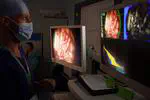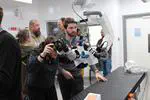Posts
Post overview:
- Focus: Support surgical imaging data analysis tasks and work on computational algorithms to help streamline data annotation
- Line manager: Tom Vercauteren
- Salary: Grade 5, £38,482 - £43,249 or Grade 6, £44,355 – £47,882 (max SP34) per annum including LWA depending on experience
- Duration: Fixed term contract until 30 Sep 2025

![PhD opportunity [June 2026 start] on "Anatomy localisation in X-ray fluoroscopy videos for mechanical thrombectomy" in collaboration with Telos Health](/post/2025-09-29-mtanatomy-phd/featured_hu_92ae8702a215a5d4.webp)
![PhD opportunity [October 2026 start] on "Patient-specific CTA-informed in-silico simulation of interventional fluoroscopy: A digital twin for stroke patients"](/post/2024-11-18-fluoroscopydt-phd/featured_hu_d68e9288704a5862.webp)
![PhD opportunity [October 2026 start] on "Real-time intraoperative polarimetric imaging to detect nerves during brain tumour surgery"](/post/2025-09-29-polarimetry-phd/featured_hu_63c0bcd2be5f9274.webp)





![KDC Africa PhD studentship [October 2025 start preferred - no later than June 2026] on "Resource-efficient slice-to-volume MRI super-resolution reconstruction for improved meningioma management in Sub-Saharan Africa"](/post/2025-01-28-mrireconsssa-phd/featured_hu_8e48c5a738a889ae.webp)